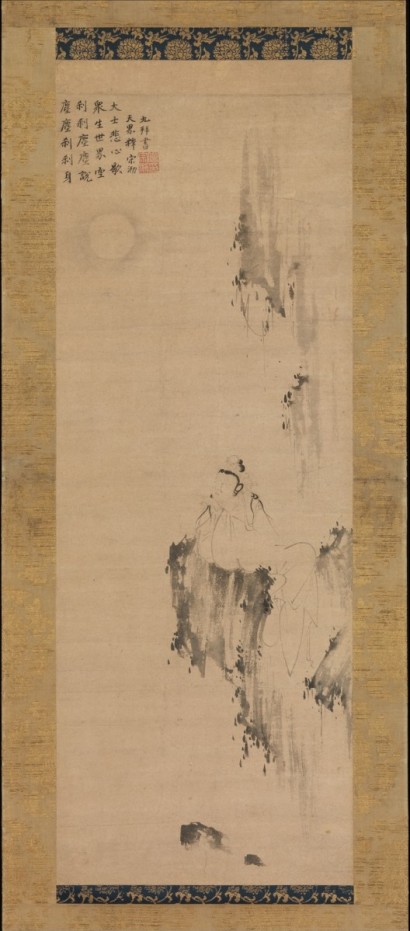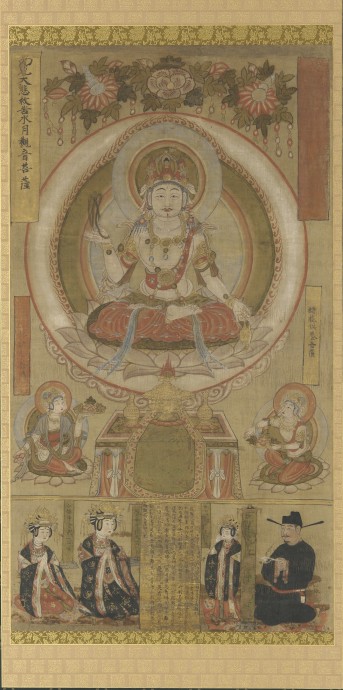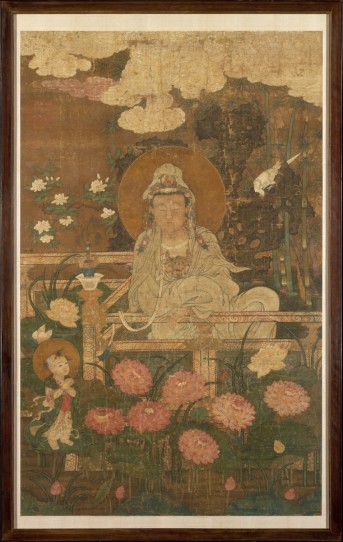Inscribed by Quanshi Zongle (1318–1391), China, Ming dynasty, late 14th century; hanging scroll, ink on paper; image: 36 x 12 7/8 in., mount: 70 x 17 5/8 in., The Metropolitan Museum of Art, Edward Elliott Family Collection, The Dillon Fund Gift, 1982, 1982.3.3, photo: www.metmuseum.org.
In this nebulous, dematerialized landscape, White-robed Guanyin sits on a diamond-shaped boulder that evokes Mount Potalaka, the bodhisattva’s Pure Land. Male face and female hairstyle add ambiguity to the depiction, exemplifying the equivocal nature of Avalokiteshvara’s morphology. The inscribed poem makes references to Indian Sanskrit texts, specifically the Avatamsaka Sutra and Heart Sutra, in which Avalokiteshvara demonstrates his wisdom. He recognizes that “The body is as small as specks of dust and as ephemeral,” yet also that everything is vast and interconnected. Within this matrix, the bodhisattva extends compassion to all. Curiously, the inscription is written from left to right, which is rare in Chinese calligraphy but sometimes appears in Chan poems like this one. JS







